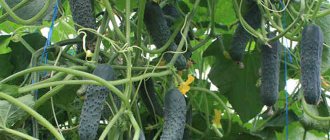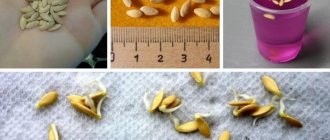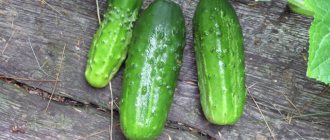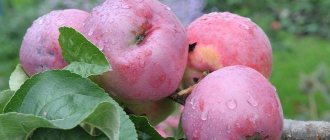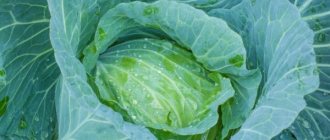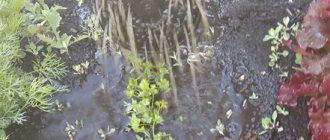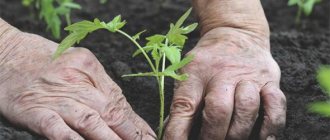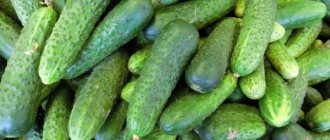Detailed description of the variety
The main advantage of this variety is that it does not need insects for pollination. This allows you to successfully grow April cucumber in a greenhouse, as well as on a windowsill or even on a balcony. These cucumbers were bred in 1977 and since then have been one of the most popular and versatile varieties. This is a first-generation hybrid, which has a central lash length of about 2 m. At the same time, the side lashes do not grow. Most of the flowers on the plant are female.
Caring for April cucumbers
Regardless of whether the cucumber grows in a greenhouse, on a balcony or in a garden, care is standard. This includes watering, tying, pinching, carefully loosening the soil, fertilizing and weed control.
Latest articles for gardeners, gardeners and flower growers
Ammonia in the garden application for strawberries
Feeding tomato and pepper seedlings with folk remedies
Lunar sowing calendar for 2021 gardener table
Pruning raspberries in spring: how to do it correctly
Water the plants with warm water, best in the evening. It is necessary that water does not fall on the leaves of cucumbers, as in the greenhouse this leads to increased humidity and the appearance of various infections.
Watering can be combined with fertilizing, which is mandatory for cucumbers. If the soil was well filled with organic matter, then the dose of nitrogen components can be reduced. In the second period of the growing season, when greens will form, more potassium and phosphorus additives are introduced into the plant “menu”.
ON A NOTE! Watering cucumbers with nettle infusions, as well as ordinary wood ash, is effective. It is recommended to carry out the first feeding no earlier than 14-16 days after planting the seedlings. In total, cucumbers are fed at least five times during the season. Fertilizing not only helps to increase productivity, but also improves plant immunity. In addition to traditional organic matter: mullein, bird droppings, peat or ash, they also use “mineral water”: urea, potassium sulfate, superphosphate.
Description of fruits
The April cucumber variety is distinguished by dark green fruits. Their length is 15-25 cm. The surface of the fruit is ribbed with slight fluff. The shape of cucumbers is cylindrical. This hybrid, together with the Zozulya variety, received first place at an international exhibition in terms of taste.
The peculiarity of April cucumbers is that when overripe they do not become bitter and do not overgrow. Also, the variety is not prone to yellowing.
The weight of one fruit varies between 200-250 g.
Is it possible to preserve April cucumbers?
April cucumber f1 is suitable for fresh consumption. It is mainly intended for salads, cold appetizers, and soups. But canning cucumbers is quite possible. The size allows you to pickle and pickle the fruits in their entire state.
Main characteristics of the variety
According to reviews, cucumbers of the April F1 variety look like in the photo in a greenhouse; they are not frost-resistant varieties. They love good light and enough warmth.
Cucumbers are resistant to most common diseases. At the same time, they are susceptible to white rot. Gardeners are pleased with the hybrid’s undemanding nature in terms of care and the soil in which the variety grows. It does not require frequent fertilizing and is suitable for cultivation throughout almost all of Russia.
Productivity
April cucumbers are high-yielding varieties with early ripening. It takes 1.5 months from the first shoots to the first harvest. At the same time, the peculiarity of this hybrid is its uniform yield. There won't be enough cucumbers for the whole season. It is advisable to plant another variety of later cucumbers.
Productivity per 1 sq. m is up to 24 kg. In the first 2-3 weeks of fruiting, the yield per 1 m2 is 15-17 kg.
Important! The quantitative indicator of the yield can be affected by illumination. If cucumbers are grown indoors, on a windowsill, then they need additional light.
Resistance to pests and diseases
Apart from white rot, the April variety is otherwise resistant to disease. Pests also do not seriously affect this variety if proper crop rotation is used on the site and basic preventive measures are carried out.
Pros and cons of the variety
Like other varieties of cucumbers, the April variety, according to description and reviews, has a large number of advantages. But there are also disadvantages. This is important to consider when choosing cucumbers for planting.
Advantages of the variety:
- self-pollinating;
- early maturity;
- friendly and simultaneous fruiting;
- high resistance to diseases;
- not capriciousness in care.
The disadvantages include:
- fruiting for a short period;
- predisposition to white rot.
But there are many more advantages, which is why this hybrid successfully thrives in the beds and balconies of cucumber lovers.
Growing without seedlings
A common way to obtain a vegetable crop is to plant seeds for seedlings, but there is a method of growing plants directly in open ground; it is suitable for warm climates, with early winters and the absence of late frosts.
Planting, growing and caring for a hybrid variety is carried out according to certain rules, when followed, you can get a healthy and rich harvest.
Open ground conditions
The formation of cucumbers in open areas requires the creation of optimal conditions that will help regulate all processes from growth to the abundance of the harvest.
Cucumbers do not like drafts
You should choose a place for planting taking into account the plant’s requirements for light, protection from drafts, and soil composition (sandy and loamy soils are suitable). If the area was previously sown with other vegetable crops, it is worth checking whether it is prohibited to plant cucumbers after them.
Landing
The optimal soil temperature is 15 °C during the day and 8 °C at night, otherwise the seeds will freeze. The April variety is sown in open soil in the last ten days of May. The ground is first loosened, cleared of weeds and furrows are dug.
A nutrient mixture (peat, humus, sand and mineral fertilizers) is placed at the bottom of the hole, the seeds are sown, 2 cm of soil is covered and mulched until the first shoots.
Watering
The description of caring for vegetable crops includes creating an optimal watering regime. A plant sensitive to lack of moisture may turn yellow and drop its leaves. This is due to the close location of the root system to the soil surface.
The sown area is mulched, which prevents moisture evaporation. In hot weather, at 30°C, morning and evening watering is needed. During the rainy season, the procedure is canceled, and in moderate air humidity it is carried out once every 2 days.
Loosening the soil and weeding
After watering, loosening is carried out to prevent hardening and cracking of the soil. The rhizome located near the surface suffers, which can lead to the death of the plant.
Weeds absorb nutrients from the soil. Throughout the growing season, you need to weed the beds, increase the saturation of fertilizers and increase fruiting.
Stepsoning
According to the characteristics of the variety, April cucumbers f1 do not form side shoots well
Despite the genetic peculiarity, they resort to pinching to increase the yield. With vertically installed supports, cut off all unnecessary shoots, except for the main shoot.
Structuring helps keep the garden bed tidy and will make it easier to collect fruits and care for vegetables. The usual method of cultivation involves pinching the side shoots to the level of the first 4-6 leaves and the top by 2 cm. The procedure is carried out carefully, trying not to damage the young plants.
Garter
Growing the crop requires obligatory garter during the growth process. Manipulation makes it easier for sunlight to penetrate the plant and stimulates the formation of lateral canes. This affects the amount of future harvest.
The productivity of plants depends on the correct garter
Several types of tying have been developed.
- Horizontal. On both sides of the row, supports are driven in, between which the threads are pulled at different levels. Young seedlings are tied to the lower one using ropes made of soft material.
- Vertical. The method of installing the side supports is similar to the horizontal one, but a rope is pulled at the top. Ropes go to it from the base of the earth; they are tied to the plants. The method allows the bush to grow upward.
- Grid. In specialized stores they purchase a net designed for spreading species. It is attached to the side supports. During the growth process, plants entangle it and do not require additional garter.
Top dressing
Feeding cucumbers with nutritional compounds is included in mandatory care, but seedlings fed during the sowing period are left alone for 14 days. The relay race begins with ammonium nitrate fertilizer, which is taken taking into account 15 g per 1 m². During the period of active shoot formation, a potassium mixture is added (20 g - potassium nitrate and 25 g - superphosphate).
The beginning of fruiting requires another feeding. It is recommended to alternately use mineral and organic compounds. The mixture is dissolved in water and left for 72 hours. The resulting liquid is diluted with water in a ratio of 1:10 and poured 1 liter into the bush.
Growing April cucumbers
If you follow the specific agricultural technology, cucumbers will give a stable and large harvest. April cucumber f1 is suitable for growing both by seeds and by seedlings. The parthenocarpic properties inherent in this hybrid allow it to be grown absolutely without the participation of pollinating insects, but if insects do pollinate the cucumber, then on average the yield increases by 25%.
Sowing time
The timing of sowing cucumbers depends on how they will be grown: seedlings or not.
When planting seedlings, the optimal age of seedlings for transferring to open ground is 25 days, when 4-5 leaves are formed. Therefore, the timing of sowing depends on when it is necessary to plant seedlings in open ground. In the southern regions - early May, and in the more northern regions - June.
As for growing cucumbers without seedlings, in this case the sowing time depends on the agricultural conditions. For a greenhouse, the sowing time is mid-April, and for open ground - the end of May.
Important! It is better to focus on soil temperature and weather conditions.
Selecting a location and preparing beds
To plant April cucumbers, you need to select a site with loamy or sandy loam soils. It is better to choose a planting site on the south side of the site, in a sunny place. This is a light-loving variety that will not be able to produce a full harvest in the shade. In the fall, rotted manure, superphosphate, and potassium fertilizers are applied to the cucumber plot.
After applying fertilizer, the area should be dug up. If the soil is characterized by high acidity, then dolomite flour, ash or lime are added to the site in the fall.
Site preparation continues in the spring. The soil is fed with nitrogen fertilizers and compost is added to the hole immediately before sowing.
To comply with the basic rules of crop rotation, you should not plant cucumbers in the same place. The best predecessors are potatoes, garlic, peas, beans, and beets.
How to plant correctly
Cucumber seeds should be planted to a depth of no more than 1.5 cm. You should not plant them deeper than 2 cm, since it will be difficult for the seedlings to break through. Place 1-2 seeds into the prepared hole. After germination, plantings should be deflated if they are to be frequent. The ideal distance between cucumbers is 30 cm. The distance between rows is 50 cm. When thinning, it is important not to damage the root system of a nearby growing specimen. It is better to cut close to the ground.
When planting seedlings, they must be buried in pre-prepared holes. After thinning, it is recommended to treat the seedlings with a growth stimulator.
Important! Experts recommend planting 3-4 varieties of cucumbers in one bed to ensure pollination occurs.
Aftercare for cucumbers
To obtain maximum yield, you will need to create optimal conditions. It is important to follow all the basics of agricultural technology and carry out proper watering, loosening, fertilizing and disease prevention. According to descriptions and reviews, the April cucumber f1 is easy to care for, but it has its own nuances.
Watering is carried out depending on weather conditions. In open ground, April cucumbers do not need to be watered if there is regular rain. If there is little rainfall, then the plantings need to be watered once every 2 days. If there is no precipitation, watering is carried out every day.
Moreover, if the ambient temperature is above + 30 °C and there is no rain, then you need to water the cucumbers 2 times a day.
The water should be warm so that the root system does not become overcooled.
After watering, it is recommended to loosen the soil. It is better to do this regularly before the cucumbers begin to bloom. But weeding should be carried out constantly, as needed. Weeds can take away some of the nutrients and also spread diseases.
Important! Since the April variety branches weakly, there is no special need for the formation of a bush. But experienced gardeners still resort to pinching to increase productivity and leave only the central shoot.
For young plants, pinching is recommended only after the shoots have reached at least 6 cm in length.
To make caring for cucumbers easier, it is recommended to tie the plant. There are several ways to tie:
- Horizontal - strong twine is tied to wooden or metal supports. The method has a disadvantage - hanging shoots can create shadows for the rest of the plant.
- Vertical - the string is pulled vertically, and the cucumber is pulled up along it.
- Mesh - a special mesh is used.
Cucumbers respond positively to feeding. The first time it is necessary to apply fertilizer 2 weeks after sowing. Add ammonium nitrate.
Fertilizing with potassium fertilizers is carried out during the formation of shoots. At the beginning of the fruiting period, organic matter or mineral fertilizers are applied.
Important! Any fertilizing is carried out no more often than once every 10 days and only 2 hours after watering.
The April cucumber is resistant to most diseases, but it must be protected from white rot.
Rot can appear due to excessive planting density. It is important to constantly ventilate the greenhouse so that the air does not stagnate.
To combat emerging white rot, it is necessary to spray with special solutions according to the instructions.
Landing
Seeds must be purchased anew each season rather than collected. The manufacturer pre-treats them with stimulants and disinfects them, so no additional processing is required. If desired, you can germinate them before planting by wrapping them in a damp cloth for 1-2 days.
It is permissible to grow the hybrid using seedlings or without seedlings.
When to plant seedlings? This is done after April 20. The soil is bought in a store or prepared from garden soil with humus or compost. The self-assembled substrate must be spilled with boiling water or a hot solution of potassium permanganate to kill bacteria and parasite larvae, as well as pathogens.
Plants have a vulnerable root system. To avoid injury, it is better to do as few transfers as possible. Peat pots are suitable for seedlings, which should be buried in the holes when planting the seedlings in a permanent place.
Fertilizers are not required at this stage. The seedlings are placed on a sunny windowsill and watered as needed. A month after germination, they are transferred to a permanent place.
The agricultural technology of the hybrid in open ground is somewhat different. Seeds are sown to a depth of 1.5-2 cm, keeping a distance of 50-60 cm. They are planted in open ground when the soil warms up to at least +16 and the frosts have ended. In a greenhouse for 1 sq. m you can place up to 3 bushes, in the open air - up to 5.
Since the variety is self-pollinating, there is no need to treat the inflorescences with a brush during flowering, even when it grows in a greenhouse.
